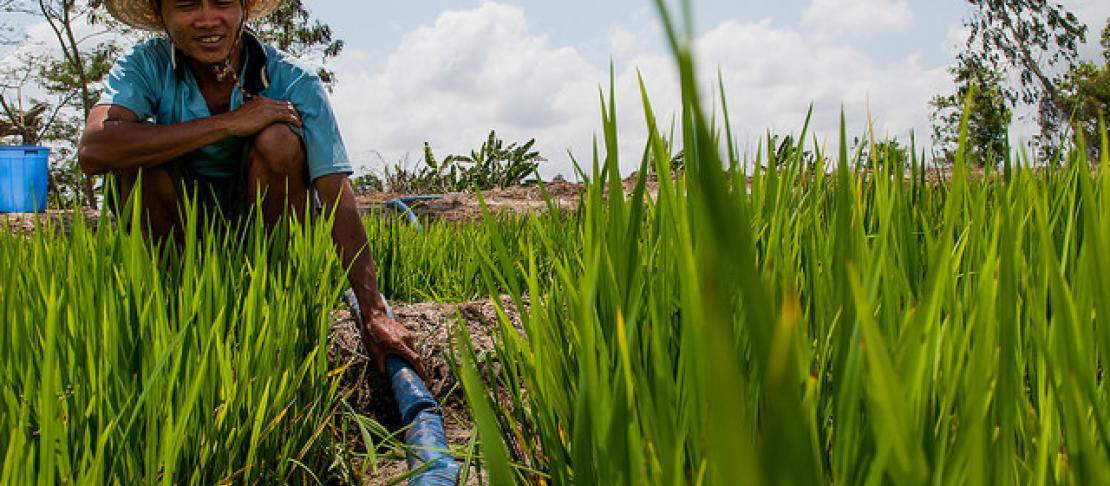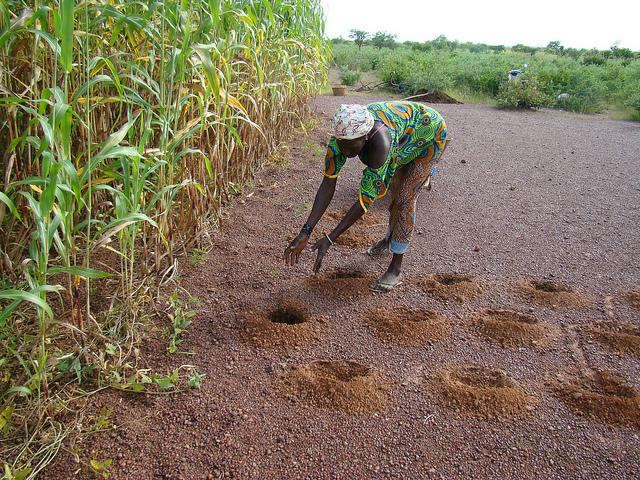How can researchers and policymakers support farmers in combating drought and desertification?

The United Nations has designated 17 June as the World Day to Combat Desertification and Drought (WDCD) to raise awareness about the threats and consequences of desertification and drought.
Drought and desertification are crucial issues in a changing climate, challenging food security and livelihoods across the globe. Researchers are working hand in hand with communities to test tools and approaches that help combat these dual threats to food and farming. The challenge now is to promote widespread adoption of climate smart practices across the globe.
Farmer-driven solutions are bearing fruit in building resilience to the challenges of drought and desertification in the face of climate change. So far, these practices have been adopted on a small scale. Barriers to wider adoption, particularly in Africa, include a low level of investment in knowledge dissemination, and lack of integration of practices like water management, agroforestry and conservation agriculture in areas where agricultural extension does exist. To help spread these practices and make a real impact on food security, support from policymakers is needed.

Zai pits are an innovation from the sahel that help fight drought and desertification while increasing yields. photo: m. tall
In a special Nature Outlook on Agriculture and Drought, senior CCAFS researchers highlighted the practical steps governments can take to enhance sustainable agriculture, mitigate droughts and reduce land degradation under a changing climate.
Get the full story: Combating drought with sustainable agriculture
CCAFS researchers emphasized the need for investment in pre-planned drought risk-reduction programs, not just crisis management. In one such program in India, CCAFS helped design better rainfall indices for a weather-based crop insurance scheme covering 50,000 farmers. Farmers can now shield themselves from devastating crop losses and can be sure of prompt compensation in the event of crop failure because of drought. With the certainty that comes with insurance against unruly weather, farmers have the confidence to invest in new seeds, technologies and livestock breeds that could improve their production.
In Latin America, CCAFS is working with Guatemala’s Ministry of Agriculture to prepare for future drought events. Simulation exercises empower government workers to improve their planning and decision-making in the event of a drought. Through a joint learning process, the project is strengthening the government’s ability to deal with growing agro-climatic risk in changing climate.
In West Africa, localized seasonal climate forecasts for farmers are taking off at CCAFS sites, helping farmers manage the risk of drought throughout the season. Government support is needed to scale up, through encouraging collaboration across the agencies that produce agro-climatic information and communicate it to farmers, and establishing public-private partnerships with mobile phone companies and rural radio and TV stations to reach the maximum number of farmers. CCAFS has also worked with African meteorological institutions to improve data and make forecasts available online, with potential use by extension services and NGOs to reach millions of farmers.
VIDEO: Putting climate information into farmers hands
By focusing on the role of women in managing the risks of drought, land degradation and climate change, researchers and policymakers can help build climate resilience for all. In Nepal and India, CCAFS and partners trained women leaders to manage climate risks, including in adaptation techniques such as rainwater harvesting, cultivating terraces and mulching and that fight soil fertility loss, erosion, and water scarcity. The ‘training of trainers’ approach will send the message far beyond the 90 women trained in Nepal, as each trainee trains 100 additional women farmers.
In Vietnam’s coastal Bac Lieu region, a partnership between the International Rice Research Institute, the Department of Agriculture and Rural Development and others has supported training over a thousand farmers in the water-saving technique known as alternate wetting and drying (AWD). AWD is a double win—it both cuts down on water needs for irrigation without hurting yields, and reduces greenhouse gas emissions from fields. Climate change is affecting farming in the area in several ways: longer dry seasons, and more dry spells during the rainy season. AWD is an important protective strategy against the threat of increased drought, allowing trained farmers to cut water use by 30%.
VIDEO: Alternate wetting and drying—using less water to grow rice
Read more on farmer innovations in combating drought and desertification
Learn more:
READ: Combating drought with sustainable agriculture
READ: New project addresses worries about drought in Guatemala
READ: Improved rainfall indices help insure more than 50,000 farmers in India
READ: Better rainfall data means Indian farmers have better insurance against crop failure
READ: Mobilizing African meteorological institutions to help smallholder farmers
READ: Training women to train others: a smart way to spread the message about gender and climate change
Alexa Jay is a communications specialist with the Climate Risk Management theme. Sekou Toure is a communications specialist for CCAFS West Africa.
Join the conversation on Twitter with #WDCD2014



